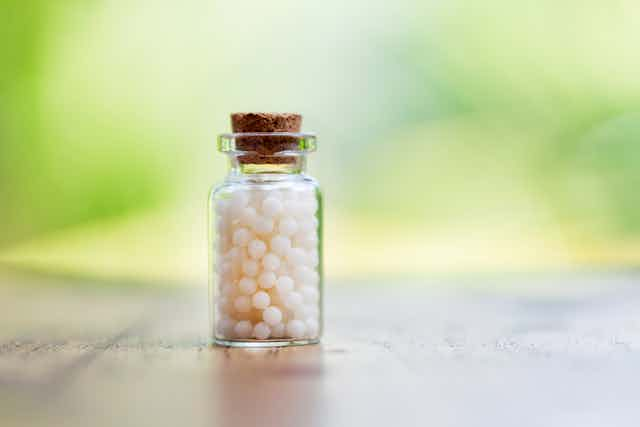Australia’s drugs regulator seems to be endorsing pseudoscientific claims about homeopathy and traditional Chinese medicine as part of its review of how complementary medicines are regulated.
In the latest proposed changes, the Therapeutic Goods Administration (TGA) is looking at what suppliers (also known as sponsors) can claim their products do, known as “permitted indications”. An example of a “low level” permitted indication might be “may relieve the pain of mild osteoarthritis”.
If approved, the suppliers can use this permitted indication to market its listed product, one of about 11,000 listed complementary medicines on the Australian Register of Therapeutic Goods (indicated by “Aust L” on packaging).
However, the spreadsheet of 1,345 draft permitted indications includes many that seem to lack evidence to back them.

For instance, despite the Therapeutic Goods Advertising Complaints Resolution Panel upholding complaints of a lack of evidence that magnesium (and homeopathy) “relieves muscle cramps (and restless legs)”, this permitted indication is on its draft list.
Other examples include “supports transport of oxygen in the body”, “regulates healthy male testosterone levels”.
The list contains around 140 traditional Chinese medicine indications, such as “Harmonise middle burner (Spleen and Stomach)”, “Unblock/open/relax meridians”, “Balance Yin and Yang”.
There are also around 900 additional indications for unspecified “traditions”. These include, “Renal tonic”, “Helps healthy liver regeneration”, “Emmenagogue”, “Vermifuge” and “Vulnerary”.
Endorsing traditional medicines without evidence they work
Australia is a multicultural society, and it’s appropriate we respect and have some knowledge of complementary medical traditions.
Some observations made in these traditions have led to valuable, efficacious medicines, such as Artemisinin derivatives isolated from a herb used in traditional Chinese medicine.
However, scientific investigation has not substantiated many other aspects of such traditions, such as the homeopathic principles of “like cures like” and traditional Chinese medicine concepts of meridians through which the life-energy known as “qi” flows.
We also cannot assume traditional medicines are safe, as emerging data highlights how common adverse reactions and drug interactions really are.

For example, Hyland’s homeopathic baby teething products were recalled by the US Food and Drug Administration and then the TGA. This was because lack of quality control over potentially toxic ingredients – belladonna alkaloids – associated with adverse events in hundreds of babies.
In China, out of the 1.33 million case reports of adverse drug event reports received by the National Adverse Drug Reaction Monitoring Center in 2014, traditional Chinese medicine represented around 17.3% (equivalent to around 230,000 cases).
What we propose
Listed medicines, like those mentioned, are meant to contain pre-approved, relatively low-risk ingredients. They should be produced with good manufacturing practice and only make “low-level” health claims for which evidence is held. However, the TGA does not check these requirements before the product is marketed.
So, to safeguard shoppers, consumer representatives (of which I was one), suggested the proposed list of permitted indications should be short and only contain modest claims such as, “may assist” or “may help”.
We also argued that, for consumers to make an informed purchase, claims based on “traditional use” should always have a disclaimer along the lines of what the US Federal Trade Commission uses for homeopathic products.
For example, “This product’s traditional claims are based on alternative health practices that are not accepted by most modern medical experts. There is no good scientific evidence that this product works”.
However, industry representatives argued they needed a long list of permitted indications to allow consumers to tell the difference between one product and another. They also argued that disclaimers for traditional medicines were unnecessary. Their wishes made it to the draft list, rather than ours.
While we welcome moves to better regulate complementary medicines in Australia, this current list of permitted indications, without disclaimers, represents a government endorsement of pseudoscience.
Worse, it will encourage consumers to purchase often ineffective and sometimes dangerous products.

